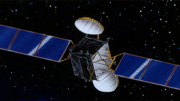Back in 2005, which wasn’t really that long ago, I paid about $40 for local phone service. I also paid seven cents a minute for long distance, which was an average price. Not terribly worrisome.
Today if you have landline service at all, it’s probably bundled in with your internet. The phone service, including unlimited long distance, costs practically nothing. There’s so much voice call capacity that it doesn’t even make sense to charge for it.
Will pay television go the same way?
How pay TV is delivered
Here in the ’20s, people get their TV one of four ways. The first is from an over-the-air antenna, which is free anyway. So let’s not talk about that in the context of this article.
1. Traditional cable television
If you have traditional cable TV, you get it through a copper wire or fiber strand that comes into your house. This same cable is capable of carrying internet data. There isn’t really any difference between internet data coming in over that wire and cable TV. It’s just a matter of how that bandwidth is divided up. The pay-TV part of it uses dedicated bandwidth so that streaming doesn’t interfere with the live TV experience.
2. Satellite television
As the name implies, satellite TV comes down from a satellite in orbit, through a dish and into your receiver. This is really the only TV technology that isn’t tightly bound into the internet, but it doesn’t matter. I’ll explain why in a minute.
3. Streaming television
Whether you watch live or choose a channel from a list, streaming television comes in through your internet service. You may pay someone else for it, but the actual heavy lifting is done by your internet service provider.
It costs money to get those programs to you
While the biggest cost in television delivery is the actual content itself, distribution is the second biggest expense. In other words, getting the program to you. The pay TV company needs to run the fiber, or launch the satellite. Pure streaming services don’t have this expense, but it’s borne by the internet service provider anyway. Obviously those companies don’t want to make costly upgrades just so people can watch someone else’s content.
The future: AT&T and Comcast
Comcast, which owns Universal Pictures and NBC, just launched a streaming service called Peacock. If you’ve watched any NBC channel recently I’m sure you’ve noticed their huge ads. This is part of Comcast’s big picture strategy. They want you to use Comcast internet to watch Comcast cable TV and stream shows from Peacock. They will control the profit stream from top to bottom.
AT&T has done them one further. They want you to watch HBO Max, TNT, CNN, TBS, or one of their other channels, using AT&T Fiber Internet. If it’s not available in your area, they’d love it if you streamed that stuff over AT&T’s cellular network. They’ve launched a live TV service, AT&T TV, which competes with traditional cable.
Both companies have a long-term strategy that leans heavily on their ability to provide everything you need for your entertainment. And that leads to one word that makes it all possible…
Bundling
Bundling is how you get local phone service now. Practically no one pays for “just” landline. It’s part of a bundle. You get the landline part for free or at a discounted price if you get their internet service. And I think in the future we’ll see some of that happening with pay-TV.
AT&T is the best positioned of all these companies when it comes to bundling. AT&T Fiber Internet covers about half the country geographically. The rest is served by AT&T’s growing 5G network. Imagine a bundle where you pay one price on one bill and it includes cell phone, home internet, and streaming entertainment with over 100 live channels as well as premium on-demand. It’s coming from AT&T, sooner than later.
Other companies are struggling to catch up, and they will. DISH recently started offering cell service through Boost Mobile and they’ll keep building that capacity out. Comcast and Spectrum offer cell service using other networks’ cables, too. AT&T may be in first place, but the contenders are rushing to catch up.
I predict that fierce competition will lead to either free or heavily discounted pay TV by 2025 at the earliest.
Where does satellite TV fit in to all this?
Don’t forget of course that AT&T owns and operates the world’s largest pay-TV service with DIRECTV Satellite. I’ll admit, subscriber numbers have dropped in recent years, due to expiring discounts and a drive toward attracting higher-paying customers at the expense of lower-paying ones. But don’t count satellite TV out.
DIRECTV’s satellite fleet is practically all new, and has enough capacity for about double the number of channels that now exist. Even adding every local channel in 4K wouldn’t take up all the space on all the satellites. Not only that, those satellites should be operational for another decade or so.
AT&T could start offering DIRECTV service at deep discounts to cellular customers. They could change their pricing so that you pay more upfront for receivers, just like you do for cell phones. Keeping costs in check would let them drive customer costs down and keep profits up. And eventually, they could offer the most killer bundle of all. One bill, one price that’s attractive enough to pay, with unlimited internet, calling, texting, all the DIRECTV content, and access to every AT&T-owned streaming app. And that bill wouldn’t be anywhere near as high as what you pay.
Now that’s what I’m talking about.





